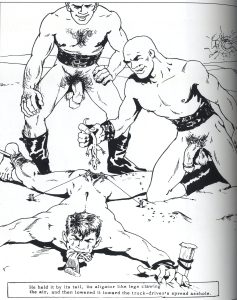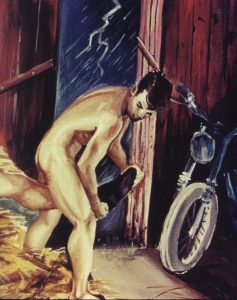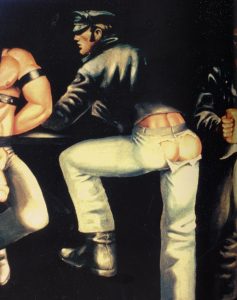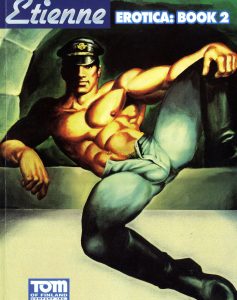Domingo Orejudos. Dom. Etienne.

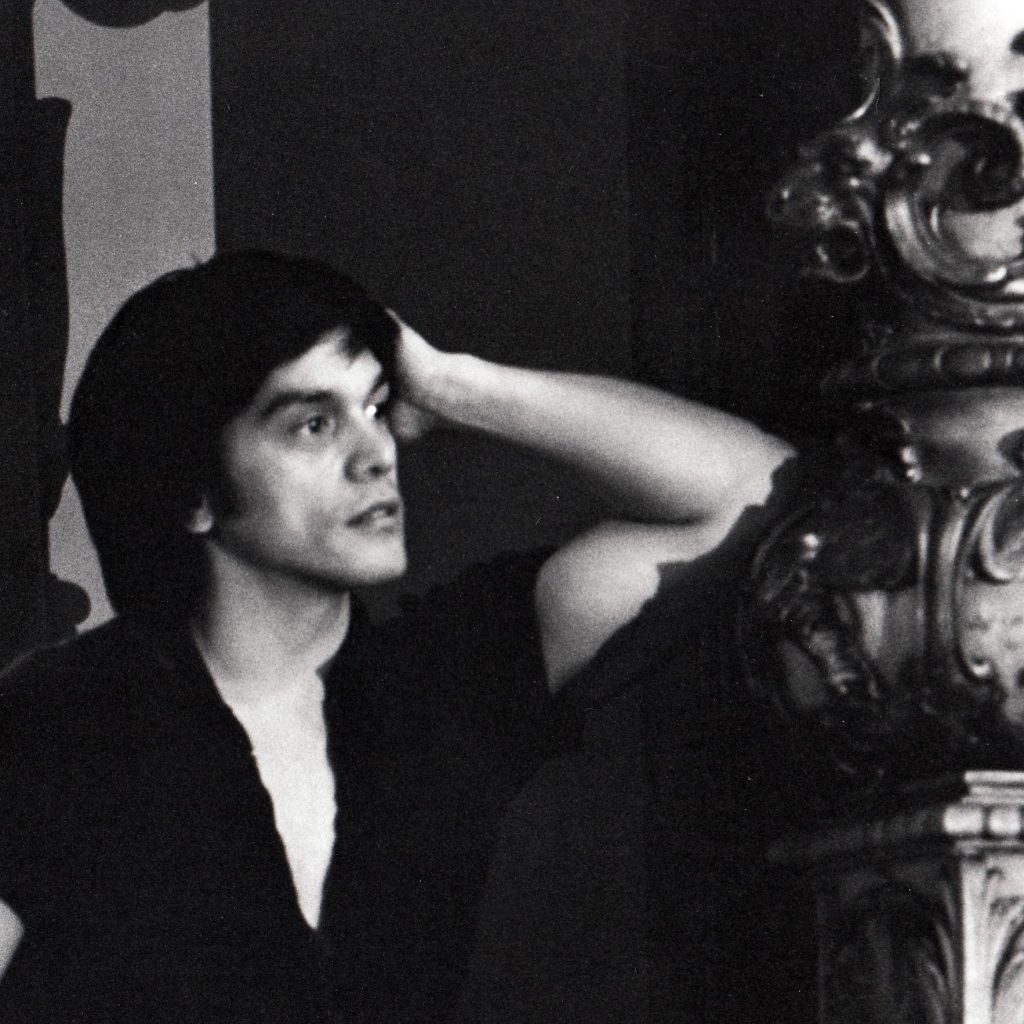
As I began writing this digital exhibition, I had some background information on Etienne’s art , but not very much on his personality or what he was like as an individual. Was he quiet and shy? Did he light up a room when he entered? Did he drink coffee or tea when he painted? Did he think his artwork would impact anyone at all? Lee Law, a patron of the historical Gold Coast Leather Bar talks about Etienne in this quote:
Lee Law recalled a conversation there with Orejudos and another man during which the other man went on at great length about what great art the Gold Coast paintings were. Orejudos finally broke in with, ‘That’s not art. They’re jack-off pictures’.
Reading this quote and comparing his artwork to this description of Etienne, it is similar to putting a jigsaw puzzle together, but one of the pieces is missing. This description of Etienne would partially explain why his work never explored racial identity. Most of his characters in his painting were White men portrayed as heroic, strong, taking on both dominant and submissive roles, and his interpretation of ultimate symbol of sexuality and desire. Etienne talks more about his sexual attraction was the creative inspiration for his work in this quote found on the Leather Archives website:
By his teens he drew to arouse himself, and his first orgasms came from drawing what he termed “dirty pictures,” which he would then burn once they got him off. Shortly after meeting Chuck Renslow, Dom had the opportunity to publish some of his erotic drawings in the magazine “Tomorrow’s Man.” Close to publication date, Dom realized he wasn’t ready to go that public and asked the publisher if he could use a different name. The publisher agreed, but said the new name had to be the same number of letters as the name “Domingo,” which had already been typeset. Dom had recently read a book featuring a character whose name contained the right number of letters: Etienne. Later in his career, Dom/Etienne remarked that he wished he had chosen a more aggressively masculine name to attach to his art.
As I synthesize this quote, secrecy and protection of his sexuality and identity were very important to Etienne. His work seems to act as a mask for him. Even his desire to go back and change his name to a more masculine name provides deep insight to his relationship to his art and sexual identity, but not his racial identity. Did Etienne equate masculinity with White men, or did he want to reflect his sexual attraction in his work?
The Keep the Shadow, Ere the Substance Fade exhibition talked about Etienne’s exploration of sexuality in one of Etienne’s paintings:
From the late 1970’s [this painting] takes up two popular uniform fetishes and revels in [a] casual erotic encounter indicated not only by the lack of a condom, but also the prominent jar of Vaseline, a lubricant that would be abandoned during the AIDS crisis because the oil-based product destroyed latex prophylactics. Such encounters were actively discouraged with the mergence of HIV.
Much of Etienne’s work shows the depth and immediacy of human desire that counteracted the protection and sterilization of sex for Gay men in the 1980’s. Before the 80’s, Gay men were beginning to openly express their homosexuality. With the wave of HIV/AIDS related illnesses and death, made Gay men and the Gay identity once again a source of hatred, fear, and discrimination.
